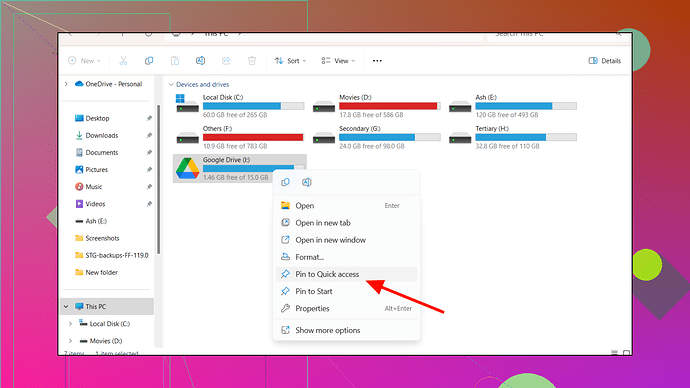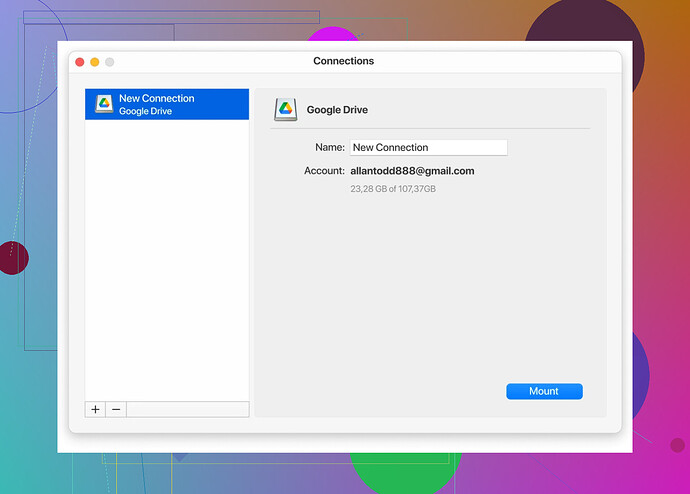I’m trying to find a way to add my Google Drive folder to the Quick Access section on my computer for faster navigation. I’ve looked through some settings but can’t seem to figure it out. Any advice would be greatly appreciated!
Get Google Drive into Your Quick Access: Windows and Cloud Tools Edition
Imagine you’re staring at your screen, trying to optimize your productivity setup, and then it hits you: wouldn’t it be awesome to get easier access to Google Drive right from File Explorer on your Windows desktop? Don’t worry; you’re not alone! Here’s a super simple guide that lays out all the steps to help you integrate Google Drive into your workflow seamlessly. Stay tuned for bonus info on a cool app that could open up even more possibilities!
Adding Google Drive to File Explorer’s Quick Access
Want to pin Google Drive for faster access every day? Let’s walk you through it like we’re sharing tech tips on an online forum. Follow this step-by-step process:
-
Get the Goods:
First off, download the Google Drive app for desktop. You can grab it straight from the official Google Drive page. Install it on your computer like you would any other software. -
Open File Explorer:
Fire up the good ol’ Windows File Explorer. This is your starting point for magical shortcuts! -
Find the Folder:
Navigate within your File Explorer to locate the Google Drive folder. It should appear automatically once the app installation is complete. -
Pin It Like a Pro:
When you’ve found the folder, right-click on it. From the context menu that pops up, select the “Pin to Quick Access” option. -
Voilà, You’re Done!
Look to the left “Quick Access” section of your File Explorer. Boom, there’s Google Drive, sitting pretty for instant access whenever you need it.
The CloudMounter Advantage
Now, here’s something sweet for those who like thinking outside the box (or beyond the sync folder). If you’ve ever balked at how syncing files with cloud storage eats into your hard drive space, say hello to CloudMounter!
This awesome tool is like the Swiss Army knife of cloud storage access. It lets you integrate not just Google Drive but also numerous other platforms like Dropbox, Amazon S3, OneDrive, and remote servers, all without syncing files locally. No syncing = no endless hard drive clogging!
Here’s how you can connect Google Drive on CloudMounter:
-
Install CloudMounter:
Download and install the app on Windows or Mac. Their website is just a quick Google search away! -
Configure the App:
Open CloudMounter, and in its connection settings, look for the Google Drive icon. It’s designed to simplify the process. -
Mount Your Drive:
All you’ve got to do now is click Mount, and watch the magic happen. -
Find It in Explorer or Finder:
Voilà – your Google Drive is now mounted as though it’s an external drive. On Windows, you’ll see it in File Explorer alongside your local disk. On a Mac, it’ll show up in Finder. -
Access Any Cloud File:
Simply click into Google Drive via File Explorer or Finder. All your cloud-saved files are ready to roll—no syncing necessary!
Why CloudMounter?
Unlike traditional Google Drive setups, CloudMounter skips the syncing craziness that often leads to your hard drive screaming, “Enough already!” Instead, it treats cloud storage systems like remote drives. Perfect for anyone who lives off cloud storage without the hassle of local file duplication.
Let me know if you hit any snags or if something doesn’t work quite as described. This method has been a game changer for me personally, and I’d love to help if you’re troubleshooting or exploring even cooler integrations!
Alright, let’s cut to the chase here—getting Google Drive in your Quick Access on Windows should be a breeze. Honestly, I don’t know how half of us survived before this feature existed! But anyway, here’s an alternate take that might differ slightly from what @mikeappsreviewer outlined.
Another Way to Add Google Drive to Quick Access
-
Install Google Drive (duh): If you’ve skipped this step, hit pause and download it first. The desktop app links your cloud and local storage together.
-
Quick Access Hack: You could follow the usual “Pin to Quick Access” method just like they said. BUT if that fails (and yes, sometimes it does for strange reasons), try this:
- Open File Explorer.
- Drag the Google Drive folder (from “This PC”) straight into the Quick Access section. Just click, drag, and drop like it’s 2005. Done.
-
Shortcut Creation Method: Alternatively, right-click the Google Drive folder and create a shortcut on your desktop. Then just drag that shortcut into Quick Access. Same result, just a different route!
Now, while these traditional methods work fine, these moves save you from too much messing around in File Explorer settings. If you’re still struggling, check if your permissions are wonky or if the Drive app didn’t install properly.
But Wait—Are You Sure Syncing is the Best?
I’ll admit, syncing everything to one folder is GREAT for convenience but a NIGHTMARE for storage. If your hard drive has a meltdown every time you hit “Sync,” consider an app like CloudMounter. It lets you mount cloud drives like Google Drive right into your system without syncing a single byte locally. It’s magic. Your files stay in the cloud without clogging up your PC. Trust me, for anyone working with large files or juggling multiple cloud accounts (Google, Dropbox, etc.), this tool is beyond helpful in not turning your PC into a storage warzone. Plus, it’s just kinda neat to see them all mapped out like local drives.
So yeah, either stick with the drag-and-drop method or dive into tools like CloudMounter if you want an upgrade. Just DO NOT let your Google Drive syncing turn your PC into a glitchy, over-filled potato.
Okay, here’s the deal—adding Google Drive to Quick Access isn’t rocket science, but it can feel weirdly complicated if you’ve never done it before or something goes haywire (thank you, Windows). Here’s a slightly different angle compared to @mikeappsreviewer’s detailed guide and @andarilhonoturno’s quick fix options.
So aside from their solid methods, here’s another thing that works for me when everything else feels like a wild goose chase:
1. Use a manual shortcut creation approach:
- Find your Google Drive folder in File Explorer (it should show up after you install the official desktop app).
- Right-click the folder, select “Send to,” and then choose “Desktop (create shortcut).”
- Now, drag that shortcut straight into Quick Access. Done. No quirky permission issues, no guesswork.
2. Reset Quick Access Settings (if nothing works):
- Open File Explorer → Options → General → Click ‘Clear’ under the Privacy section.
- This refreshes Quick Access and sometimes fixes random misbehavior where it won’t let you pin certain folders. (Not a fix-all, but it’s saved me before).
3. For a totally different approach (no syncing required):
- Have you thought about skipping the Google Drive folder altogether? Try using something like streamlining cloud access tools, which lets you access Google Drive directly as a virtual drive on your system. No syncing, no wasted storage, and honestly—it’s SO much faster, especially if your internet connection doesn’t entirely suck. Big bonus: it works with more than just Google Drive too (OneDrive, Dropbox, etc.), so cloud hoarders rejoice.
Seriously though, make your life easier. If syncing all your junk to your local hard drive is dragging your device down, rethink that. While the pin-to-Quick-Access trick is fine for a couple of files, CloudMounter-like solutions make life bearable when you’re juggling terabytes. Plus, they somehow make you feel like a tech wizard.
What do you think? Did any of this help? Or are you stuck in “it still doesn’t work” limbo? Let’s troubleshoot it.

